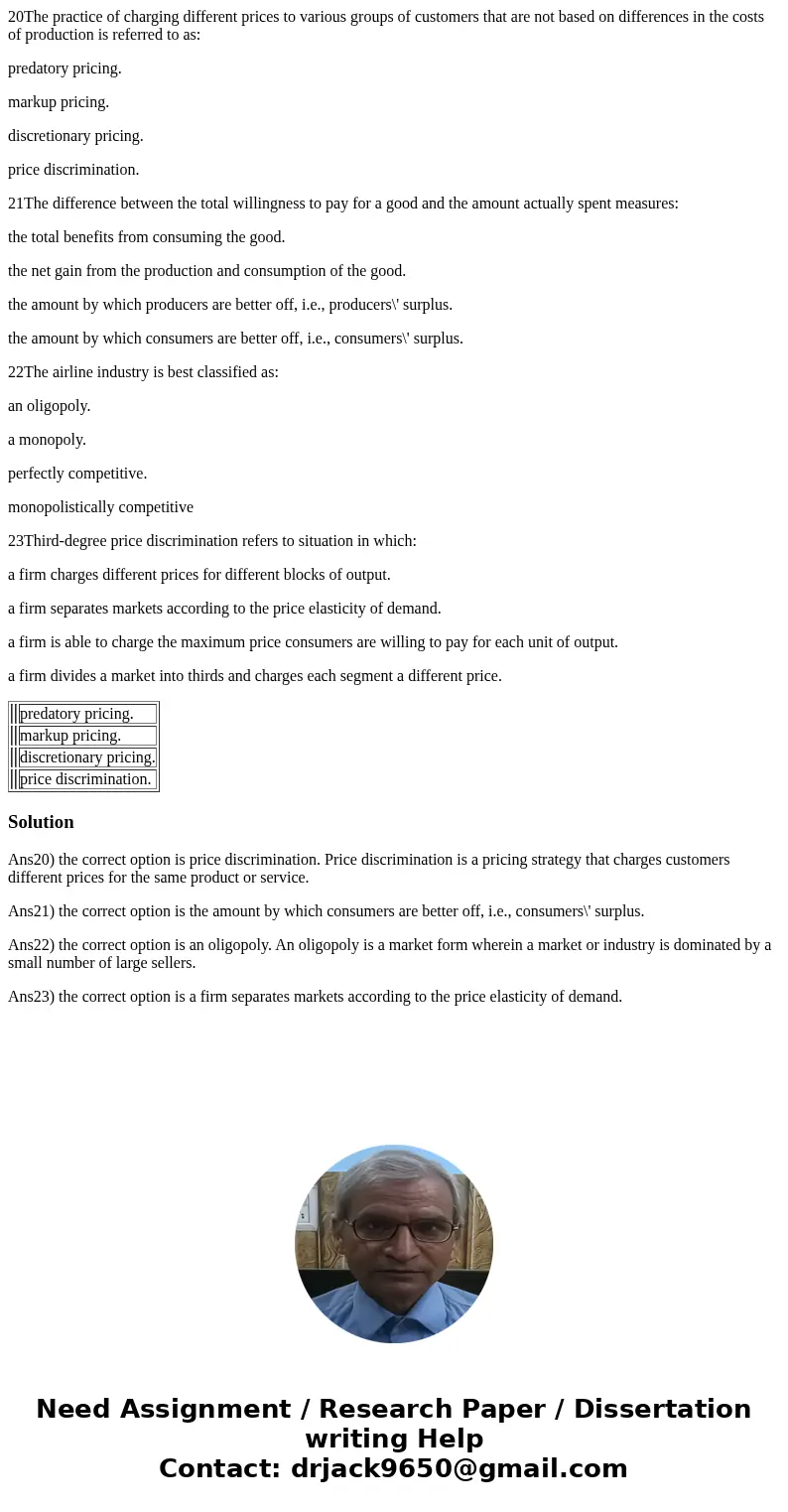20The practice of charging different prices to various group
20The practice of charging different prices to various groups of customers that are not based on differences in the costs of production is referred to as:
predatory pricing.
markup pricing.
discretionary pricing.
price discrimination.
21The difference between the total willingness to pay for a good and the amount actually spent measures:
the total benefits from consuming the good.
the net gain from the production and consumption of the good.
the amount by which producers are better off, i.e., producers\' surplus.
the amount by which consumers are better off, i.e., consumers\' surplus.
22The airline industry is best classified as:
an oligopoly.
a monopoly.
perfectly competitive.
monopolistically competitive
23Third-degree price discrimination refers to situation in which:
a firm charges different prices for different blocks of output.
a firm separates markets according to the price elasticity of demand.
a firm is able to charge the maximum price consumers are willing to pay for each unit of output.
a firm divides a market into thirds and charges each segment a different price.
| predatory pricing. | ||
| markup pricing. | ||
| discretionary pricing. | ||
| price discrimination. |
Solution
Ans20) the correct option is price discrimination. Price discrimination is a pricing strategy that charges customers different prices for the same product or service.
Ans21) the correct option is the amount by which consumers are better off, i.e., consumers\' surplus.
Ans22) the correct option is an oligopoly. An oligopoly is a market form wherein a market or industry is dominated by a small number of large sellers.
Ans23) the correct option is a firm separates markets according to the price elasticity of demand.

 Homework Sourse
Homework Sourse